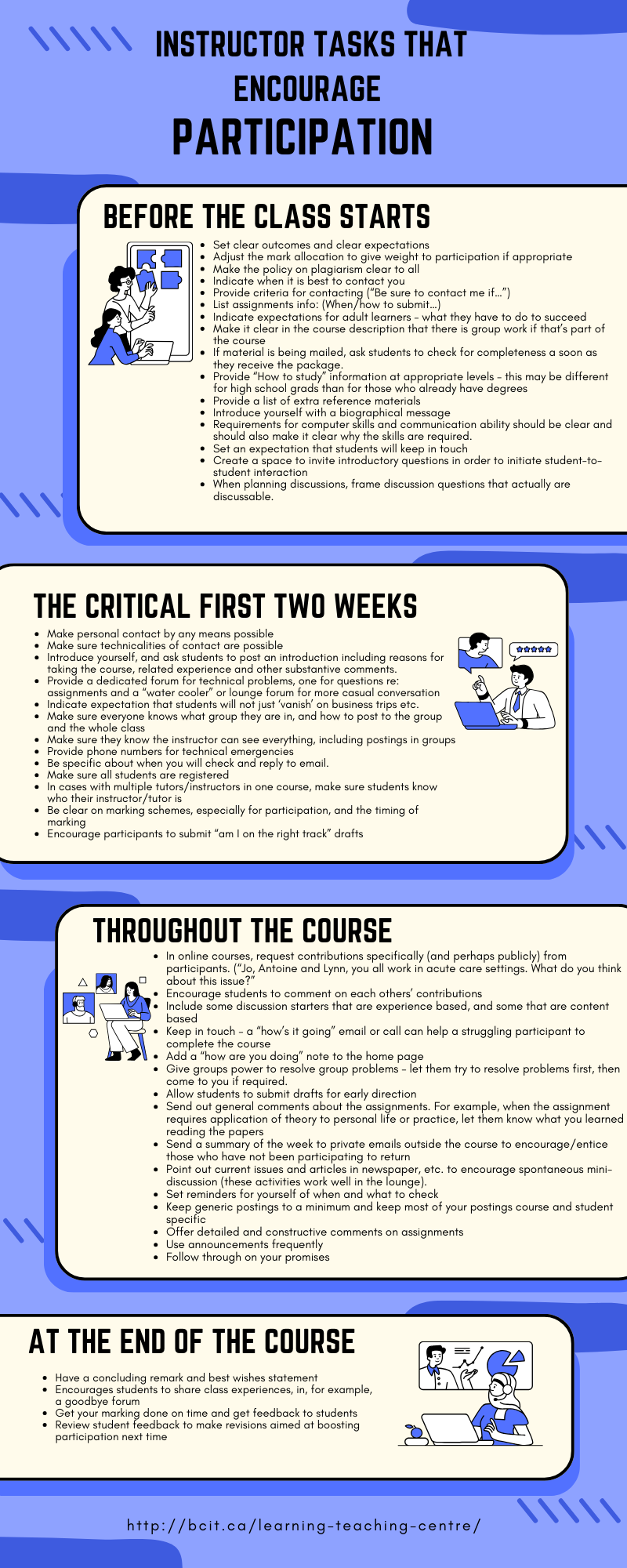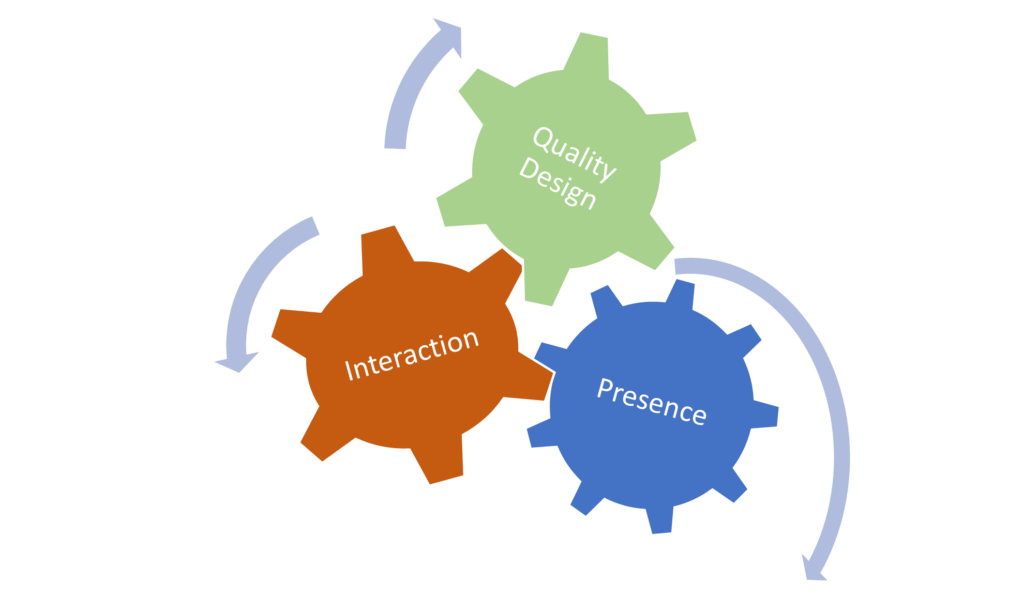Unit 1 Building and Sustaining Community Online
Your Role as a Facilitator of Learning Online
In any distance education course, whether it’s a fully online course, a paper-based correspondence course, or a blended course combining both distance and on-campus elements, the tasks and duties you perform often differ from that of the traditional face-to-face instructor. For example, course materials and learning activities are often prepared before the course begins. In fact, you may not have been involved in the course design itself. Your role, especially in synchronous and asynchronous digital spaces, is often to be the knowledgeable expert guiding novices through an exploration of the course materials and activities in support of the learning outcomes.
Further, the role of the online instructor encompasses multiple components. It changes as the course progresses, as students begin to grapple with the material, and as discussion becomes more focused and mature. A course has a beginning, a middle and an end, and there are different duties that we perform in our roles as facilitators that are linked to students’ success at the different stages in an online course.
An example of stages within a course when the instructor uses facilitation as a teaching strategy
This table below is just one example of showing student roles and instructor’s roles at the different stages of a course that is centred around the use of discussion forums (and we will see this table again in Unit 3 Being an Online Instructor, where we discuss in further detail these roles in the context of taking a facilitative approach):
| Stage | Students’ Roles | Instructor’s Roles |
| Stage 1: Access and motivation |
Getting into the course: successfully logging on | Encouraging, welcoming Clarifying role of conference |
| Stage 2: Online socialization |
Moving beyond browsing the learning environment to feel at home | Creating an atmosphere where people feel respected. May include contacting individuals by email or responding to their postings as they “arrive” (or fail to) in the conferencing spaces |
| Stage 3: Information exchange |
Deal with potential information overload. Work at finding information online. Discuss content and issues in the conference area | Present linkages in interesting ways.
Ensure that contributions are not lost or ignored. |
| Stage 4: Knowledge construction |
Begin to analyze/interpret what they are learning. Experience different perspectives. Become authors, based on their own reading and personal experience, not just transmitters of facts | Begin to move out of the way.Encourage critical thinking. |
| Stage 5: Development |
Experienced participants may share the moderator’s role. May challenge position of moderator. Take responsibility for own learning. Clearly demonstrate critical thinking. Often reflect critically on role of the technology in learning, as well as on topic area | Be prepared for challenges from participants. Don’t interfere too much with discussion, but don’t become obviously absent either |
(Based on Salmon, G. (2000) E-moderating: The key to teaching and learning)
Matching instructor’s actions with students’ needs is taking a student-centred approach. A student-centred approach is where we assume students are responsible for their own learning, while instructors are responsible for creating an optimal learning environment to enable student learning. In an online learning environment, while the space of the environment is digital, the role of the instructor remains: to determine how to optimize the environment for student learning.
And take a look at this infographic below, (or click on this link to download your own copy: Instructor Tasks that Encourage Participation Infographic [1]) which contains detailed lists of what an online instructor can do at various stages of their course to promote participation (we will talk more about this list and these varied tasks in this unit and Unit 3: Being an Online Educator).

Regardless of the teaching subject, most of the tasks detailed in the infographic are required for all instructors who are fostering learning online (and all of them if you are using teaching approaches such as learning through discussion and/or collaborative learning). While your course might use different activities in order to achieve different outcomes, the idea that what we do as instructors is linked to what students need to advance their learning remains valid. We attempt to meet students where they are at during the phase of the course (at the beginning of the course, in the middle of the course, and at the end of the course). We meet them with these tasks that support their learning needs that are directly related to the academic outcomes of the course.
This idea of looking at online students’ global needs (not just specific academic needs related to the learning outcomes) informs the approach we take in this and subsequent units. We explore key concepts in the context of linking students’ needs to instructor duties.
| Students Need: | Online Educator Does this: |
| Motivation to engage and complete | Tasks and Techniques that foster INTERACTION |
| Engagement with learning, instructor, & peers | Reduce the distance via PRESENCE |
| Clear direction & pathways through course elements | Design-related forms and functions (structure) aligned with standards of QUALITY |
And while we break each element down to help you understand them, these elements are not independent and not discrete, nor do they flow in a linear progression.
 As you will discover, each informs, affects, and is informed by the other, something like these interconnected cogs.
As you will discover, each informs, affects, and is informed by the other, something like these interconnected cogs.
- https://pressbooks.bccampus.ca/teachingonlineatbcit/wp-content/uploads/sites/2109/2023/10/Instructor-Tasks-that-Encourage-Participation-Infographic.pdf ↵

